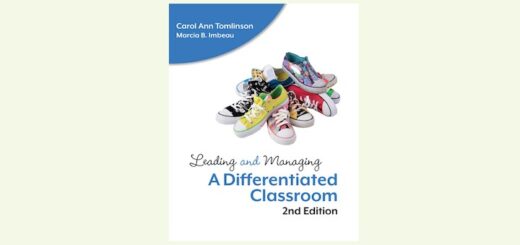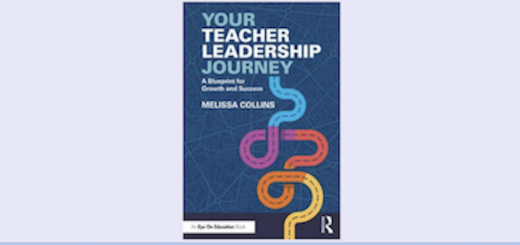Bonding with Students Right From the Start
A MiddleWeb Blog

Every interaction with students builds your classroom culture and models for them how adults should interact with adolescents. With this in mind, here are a few ways that I will be building relationships with my students when they join my class in August.
Make sure you’re pronouncing their names correctly.
I learned last March that one of my students had her name mangled by all her teachers for several years. I want to avoid this in the future so I will learn how to pronounce students’ names on the first day.
My plan is to have my students record themselves saying their first and last names, then ask them to make it the first post on their Seesaw account. The students at my school also make “60 second selfies” introducing themselves to their new teachers and include the pronunciation of their names.
Start the class with a brief writing prompt that encourages students to share about themselves.
The prompts should be engaging, fun, and give you an insight into their personalities and preferences. I tend to use ELA-related prompts, but you can adapt to whatever you teach or you’d like to know. Make sure you answer your own question so that students can get to know you, too.
Some sample prompts:
• What would be your dream of a perfectly themed bookshelf? (My answer: darkly funny zombie books or boarding school romantic mysteries written by Jenny Han or E. Lockhart)
• What 3 – 5 books would you want someone to read to get a better idea of you as a reader? If you have students who proclaim they don’t love reading, make sure you read the books on their lists so you can connect with them.
• What book do you wish you had written and why?
Learn how students want to be supported.
There are many versions of student surveys, but I keep mine simple because I learn a lot about their interests through their ELA writing responses. I have students fill out an index card with answers to the following questions so that I can easily reference them:
Dear (teacher),
If you’re proud of me, please __________
If I’m angry, please ___________
I hope we ____________
I hope we don’t ____________
I paste these cards in a composition book where I take notes on the students’ reading conferences and anything else I know about them. The cards and notes are helpful to review before parent meetings and assist me in supporting students in the way that they are most comfortable.
Support students outside of the classroom.
Find out what activities they are involved in and show up for them. I know of teachers who have a calendar where students can write their events, although I think my seventh graders might be too shy to put themselves out there in that way. Attend the school plays (and compliment the theater tech folks afterwards, too). Go to sporting and club events and concerts, and make sure students know you are proud of them.
Meet them at the doorway.
Many of us have the intention of greeting students at the door at the beginning of class, but then get distracted or busy. When I am in the doorway between periods, I find that the class starts more smoothly and I am a visual reminder of what students need to bring to class. Every period, a few of them see me and then return to their lockers for an independent reading book or notebook. After reading that research supports this practice, I’ve made it a personal goal to do every day.
Collaborate with them on a non-academic project.
I find that an art project keeps hands busy and gets students talking. There are many bulletin boards in my classroom and in the hallway outside. My advisory students and I adopted one of the boards in the hallway and made a “Take What You Need” display, full of post-it notes with affirmations and positive quotes. While we worked, we talked about all sorts of topics that would not have occurred during more structured advisory activities.
Once complete, the bulletin board created a positive atmosphere near my classroom and served as a reminder of our conversations that day.
This year, I’d like to collaborate with my students on a bulletin board based on the Corpus Libris trend, where people hold up books and take photos of themselves blending into the covers. In anticipation, I’ve made a list of the books in my classroom library that would work, but will also let them loose in the school library to see what they create.

Let them get to know you.
I’ll start the year by sharing my summer reading with students, and they will learn that I spent my time away enjoying YA dystopian novels, professional books on reading, and learning how to potty train a toddler.
I also display family photos in my classroom and bring my family to school events. During the Stanley Cup playoffs, I hung Boston Bruins paraphernalia in the classroom. I let students know about my interests so that they feel more comfortable sharing theirs.
By being more intentional in how I interact with my 7th graders at the beginning of the year, I am setting the standard for how I want our relationship to be for the next ten months and beyond. I’m always looking for ways to be more inclusive and inviting in the classroom, so please share any of your suggestions in the comments.

































Love the Corpus Libris idea for me to use in my middle level library. Would you share your list of books you are using. Also what YA dystopian do you love and would recommend for middle level. I have just “discovered” this genre and looking for some to read and add to my collection as well
Hi Alison,
Thanks for writing. These are a few of the Corpus Librus books I’ll be using:
The entire Pretties series
North of Beautiful
Speak
Everything, Everything
The Girl I Used to Be
Double Identity
False Princess
Fever 1793
Beauty Queens
Middle School is Worse Than Meatloaf
As for dystopian novels, there are so many fantastic ones to choose from. I found that many of students had not read The Hunger Games nor Divergent; they had just seen the movies. So it’s nice to start with those classics in the genre. Other recent favorites are Neal Shusterman’s Scythe series and Joelle Charbonneau’s The Testing series. If your students need dystopian-lite, try Rodman Philbrick’s The Big Dark or the new Eventown by Corey Ann Haydu.
Happy Reading!
Get on instagram and search #bookface for ideas!
I love that you brought pictures of The Boston Bruins to your classroom! That makes me so proud to know you and love that you appreciate your Boston roots! This is once an amazing article! I always learn so much from you!
Keep writing, you are my number one blogger!!!
Hi Megan,
I would like to get your permission to repost your article in a middle level newsletter that I curate for principals in Michigan. Please let me know if you are willing to give permission.
Thank you for considering.
Hi Wendy,
Please do! Best of luck this year.
Megan
Megan, Your classroom must be an oasis for your students. I remember when I taught 7th and 8th grade.. i had no idea what to do with those young people.I had 7 years of teaching high school students in private schools. I was fine with the bright kids, but I wasn’t reaching the kids from homes that were not encouraging their children to learn. Thanks for sharing these marvelous ideas. Our young people are in good hands with you!